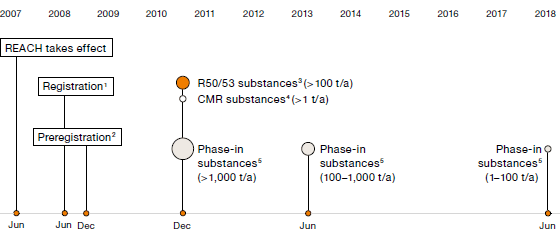Our expectations are based on the assumption that the global economy will grow in 2013. With Europe not providing any major stimulus, the BRIC countries and other emerging markets will be the main growth drivers.
WACKER’s priority is to grow its business organically. In our opinion, applications and markets continue to offer good growth potential. We will align our investments with the wider economic framework. Our investment spending over the next two years will prioritize the completion of our polysilicon production facilities in the US state of Tennessee, which are to be commissioned 18 months later than originally scheduled. Owing to inflation, the amount invested in the new plant will increase by around 10 percent to US$2 billion. At the same time, the longer construction period will make it possible to optimize the plant technology and production process, meaning that the annual nominal capacity of the completed facility will rise by at least 10 percent to over 20,000 metric tons.
We are building two new production plants at Nanjing (China) for WACKER POLYMERS and WACKER BIOSOLUTIONS. The new reactor for vinyl-ethylene copolymer dispersions will have an annual capacity of 60,000 metric tons, doubling WACKER POLYMERS’ capacity there to 120,000 metric tons. WACKER BIOSOLUTIONS is building a new plant to produce polyvinyl acetate (PVAc) solid resins, with an annual capacity of 20,000 metric tons.
This investment project will strengthen our position as the world’s leading manufacturer of polymers for dispersions and gumbase. The dispersions plant is expected to come on stream in 2013 and the PVAc solid-resin plant in 2014.
Additionally, dispersions production is scheduled to start in Q1 2013 at a new plant in Calvert City (USA), with an annual capacity of 30,000 metric tons.
In 2013, WACKER SILICONES will be investing in facilities for manufacturing downstream products. At Siltronic, capital expenditures will focus on meeting the latest design rules for 300 mm technology.
Investment spending is expected to come in at just under €600 million in 2013. It is unlikely that the anticipated cash flow from operating activities will fully cover capital expenditures. Investments in 2014 are budgeted to reach some €600 million. Depreciation will be about €550 million in 2013 and, in 2014, will also reach about €550 million.
Investments in 2013 by Division

Future Products and Services
The substitution of styrene-butadiene with WACKER’s VAE dispersions will continue. The packaging and carpet sectors are the main target industries for this substitution business. But VAE dispersions are also suitable for packaging coatings. We expect the strongest substitution-business growth in the USA, which is the world’s largest carpet market, accounting for 50 percent ($9.5 billion) of global sales. Currently, only a small section of this market uses VAE dispersions from WACKER or other manufacturers. In packaging, WACKER POLYMERS is not only benefiting from substitution potential, but is also launching new products for this industry. An innovative surface coating resin, for example, reliably seals aluminum foil against non-polar plastics. The resin is ideal for heat-sealable closure systems, such as yoghurt lids or juice cartons. What is more, we are introducing a binder for advanced industrial and packaging coatings. It has been specially designed for applying printing inks to food packaging. Both this binder and the resin will be presented at the ECS tradeshow in Nuremberg (Germany) in March. The global packaging market reported sales of $696 billion in 2011. Market researchers from Pira International estimate that this sector’s sales will rise to $820 billion by 2016. The largest single packaging market is the USA, accounting for $127 billion of the total.
Global Packaging Market until 2016 by Packaging Category

At WACKER SILICONES, we intend to launch various new adhesives onto the market. They range from a parquet adhesive composed of silicone and organic polymer building blocks, to an adhesive for high-strength wood bonding or automotive applications, through to an adhesive that bonds metal to wood extremely firmly. Ceresana, a market-research institute, expects the global adhesives market to grow by 2.9 percent a year and to generate sales of $50 billion in 2019. The construction and wood-processing industries will account for the largest share of the adhesives market by 2019.
WACKER supplies a range of innovative products for color applications and coating purposes. In the dispersions field, we have developed a versatile VINNAPAS® binder for high-quality interior and exterior paint and plaster applications. For heat-resistant coatings, WACKER SILICONES is launching a silicone resin emulsion that greatly enhances the heat resistance of binders.
At WACKER BIOSOLUTIONS, our product portfolio now includes a new solid resin for the production of gumbase. This resin simplifies the process of manufacturing gumbase because it reduces the number of ingredients required for formulation. At the same time, the chewing gum gains a longer shelf life and is easier to remove from surfaces. Every year, about one million metric tons of chewing gum are consumed around the world.
Looking ahead to 2014, we not only plan further product launches in the interior and exterior paints sector, but also intend to introduce innovative sealing materials for door and window frames, and to spur the substitution of acrylates by VAE dispersions.
